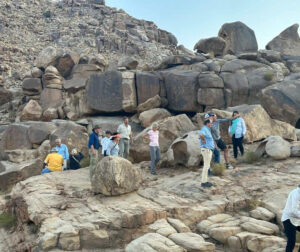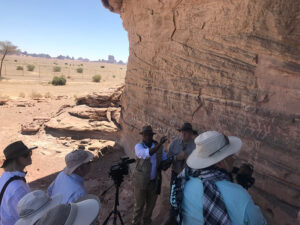Deciphering History in Stone
What Do Tabuk’s Ancient Petroglyphs Reveal?
The rugged landscapes of the Tabuk region of northwest Saudi Arabia are more than just a stretch of barren land. They are a canvas bearing the imprints of ancient civilizations that once thrived here, intertwined with events straight from the Biblical era. Our exploration into this region has uncovered fascinating petroglyphs that speak volumes to the seekers of ancient truths.
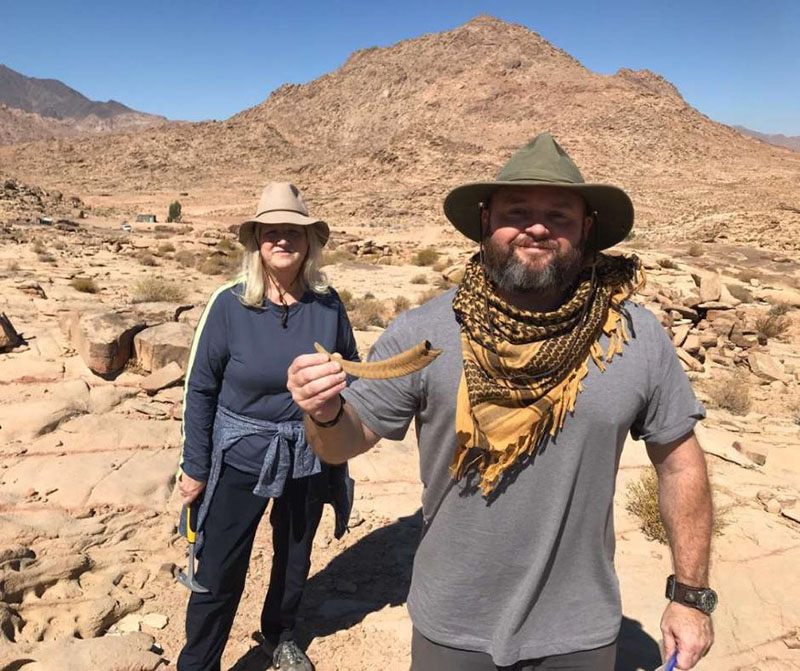
Dr. Tommy Colie, an accomplished amateur biblical archaeologist and Exodus explorer, has shared some of his recent discoveries in Saudi Arabia with us. With a rich background as an instructor of Religion and pastor, and his academic credentials in Theology and Religion, Dr. Colie brings a profound understanding of historical and religious contexts to his archaeological investigations. His extensive travel to over 25 countries as a missionary and his involvement with Bridges for Peace reflects his deep connection to Middle Eastern history and culture. He’s dedicated to exploring historical sites and interpreting ancient artifacts in his expeditions along the Exodus route and his upcoming trip back to the region in early 2024.
Footprints and Letters
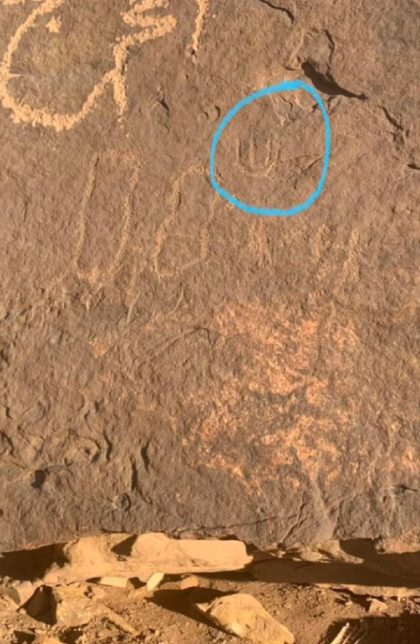
Our journey begins with the enthusiastic exploration of Dr. Collie, who shared with us some unique petroglyphs. Footprint petroglyphs had also been found west of Jabal al-Lawz by the Caldwells. This intriguing find was located merely a ten-minute drive outside of Tabuk.
This ancient inscription shows a pair of sandal or foot inscriptions alongside an ancient pictogram of the proto-Canaanite or proto-Sinaitic letter Kaph. These letters, which Dr. Miles Jones refers to as Proto-Semitic in his book The Writing of God, are roughly dated from 1900-1500 BC.
Dr. Jones writes: “The symbol for Kaph was coined from various forms of the glyphs used for cup, palm, hand, to hold, etc. The Proto-Semitic pictograph was the palm of the hand but also referred to the sole of the foot. The symbol was first simplified to three hash marks with a curved line beneath.”
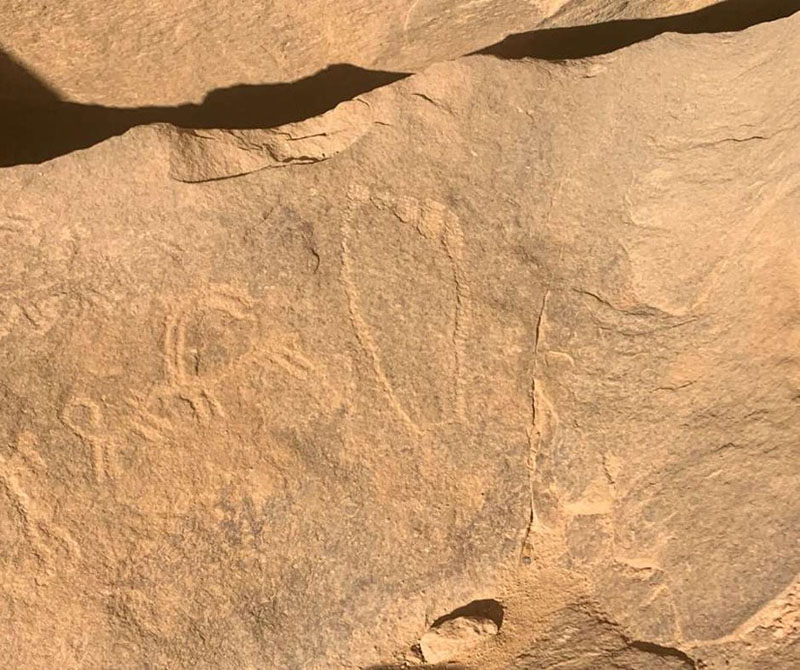
Dr. Colie’s keen observation led him to distinguish this Kaph from others. Unlike the typical Kaphs represented by three straight lines, this one bore a distinct style, perhaps hinting at its source in antiquity. It seemed to have a distant cousin in the inscriptions found at an ancient turquoise mining region in the southwest Sinai peninsula of Egypt, Serabit el-Khadim, by Sir William Flinders Petrie in 1904-05.
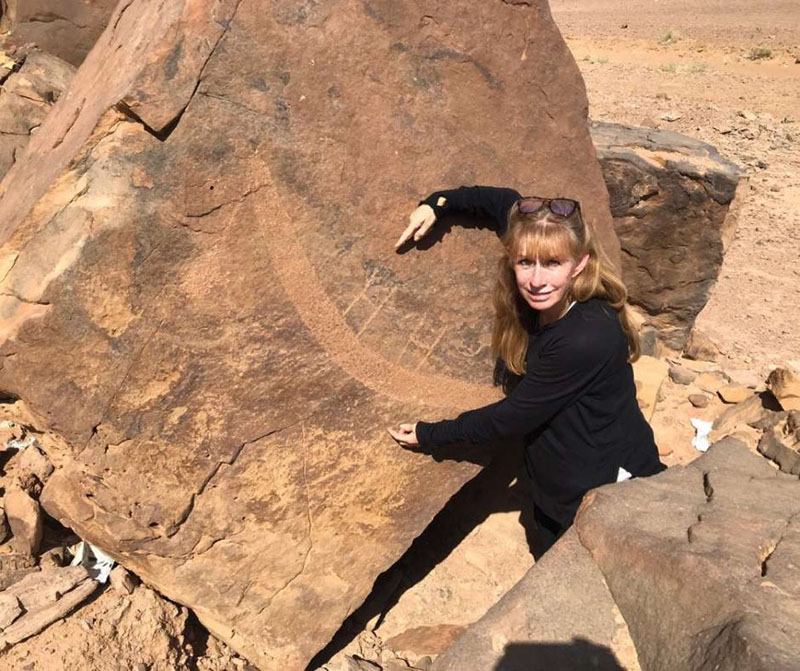
Another footprint Dr. Colie photographed is a bit different, showing the toes. It should be noted that foot and sandal prints are not one of the most common motifs found in the Negev rock art in Israel. A detailed study of foot and sandal print petroglyphs in the Negev Desert was made by archaeologists, focused particularly at a site called Ramat Matred. There, footprints are seen ten times more often than at any other rock art site in the Negev. Within the study area, the foot/sandal prints assemblage consisted of 26 different variants. “In some instances, foot/sandal prints were found in relation with both ibex and ancient North Arabian inscriptions.” They considered various interpretations including religious, ownership, and memorial symbols. Dr. Jones argues that the footprint glyphs along with the kaph letter “was a ritual placing and tracing of the feet to claim their territory” by the Hebrews.
The Egyptian Sickle Boat
The surrounding area southwest of Tabuk city also bore the depiction of an Apis bull and an Egyptian “Sickle Boat” located by Rhonda Sand of Living Passages.
This boat is inscribed on a boulder that broke away and fell from the larger rock formation. It’s roughly 80 miles from the Red Sea Gulf of Aqaba!
Turkish archaeologist Ömer Can Aksoy documented the sickle-shaped boat that he saw in 2014, judging that the petroglyph is a significant find that could expand our understanding of the interactions between ancient Egypt and Arabia. The hull shape of the Wadi Asafir boat shows similarities to Egyptian boats from the fourth millennium BC. According to “the sickle-shaped boat images are not a common feature of Arabian rock art.”
The narrative took a fascinating turn when she consulted an Egyptologist in Cairo about the boat glyph. The revelation was astounding. The Egyptologist explained, “You understand, that those two lines that come up, that’s where the ark was always kept.” He elucidated how, in ancient Egyptian lore, boats often carried an ark to safeguard precious items from destruction. A tour through the museum in Cairo later, validated this as we observed ancient depictions of boats, each bearing an ark, a safe haven amidst the unpredictable waters.
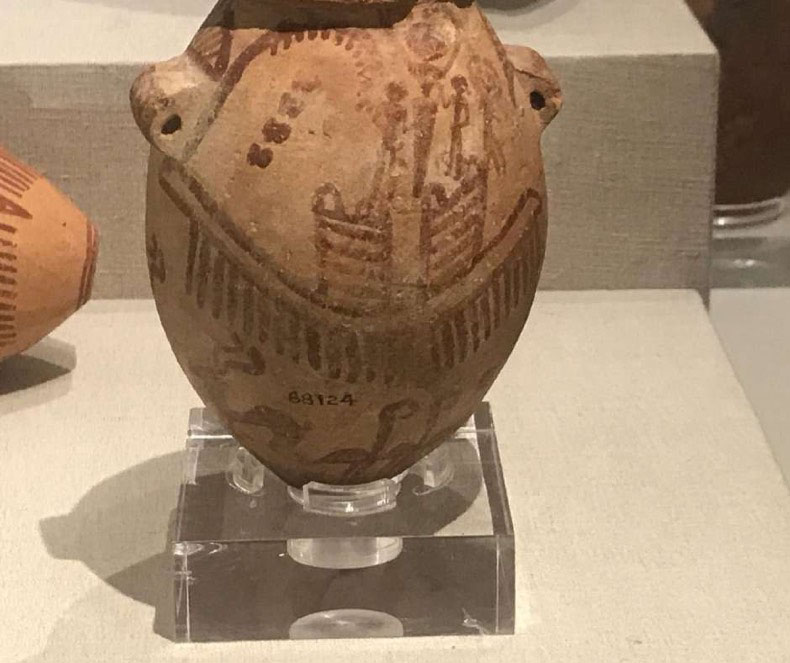
The sandal imprints, the unique Kaph, and the Egyptian sickle boat, each narrate a chapter from a time when faith was the compass guiding travelers through the deserts of the Middle East. Despite tides of unrest, the serene and historically rich landscapes of Tabuk extend an invitation to tread the paths once walked by ancient believers. The journey along the Exodus route is a pilgrimage to the roots of our faith. With the right companionship and a spirit of courage, an expedition can be spiritually enriching and eye-opening. Each stone and glyph bridges the ancient biblical era with our present, and the scriptures come alive.

What Will They Remember?
SOUTH AFRICA SAFARI

